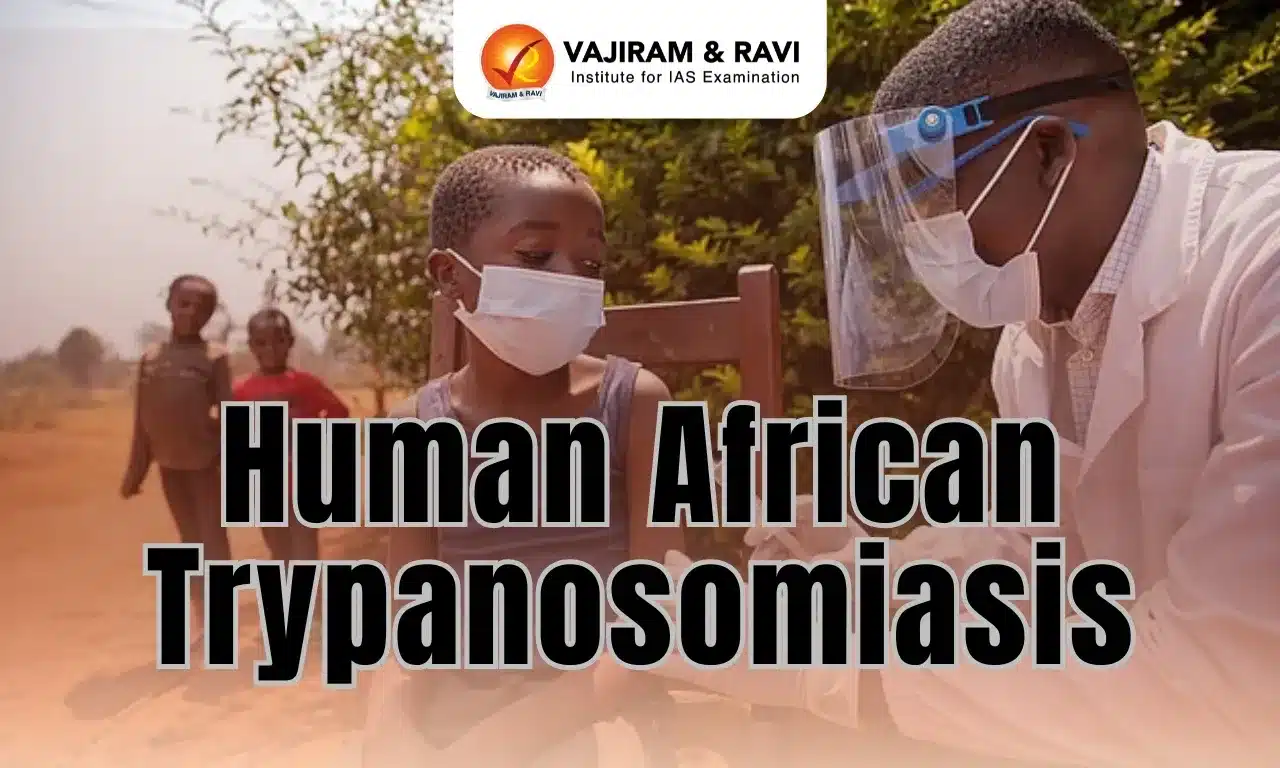Human African Trypanosomiasis Latest News
Recently, the World Health Organisation (WHO) certified Kenya as having eliminated human African trypanosomiasis, also known as sleeping sickness.
About Human African Trypanosomiasis
- It is a parasitic disease transmitted through the bite of infected tsetse flies.
- It is also known as sleeping sickness and is endemic in sub-Saharan Africa.
Symptoms of Human African Trypanosomiasis
- It shows initially symptoms such as fever, headaches, and joint pain, but can progress to neurological issues like confusion, disrupted sleep, and behavioural changes.
- First signs and symptoms emerge a few weeks or months after infection. The disease develops rapidly with multi-organ invasion, including the brain.
- It takes 2 forms, depending on the subspecies of the infecting parasite:
- Trypanosoma brucei gambiense: It is found in 24 countries of west and central Africa, currently accounts for 92% of reported cases and causes a chronic illness.
- A person can be infected for months or even years without major signs or symptoms. When evident symptoms emerge, often the disease is advanced with the central nervous system already affected.
- Trypanosoma brucei rhodesiense: It is found in 13 countries of eastern and southern Africa, accounts for 8% of reported cases and causes an acute disease.
- Who is at risk? It is more prevalent amongst rural populations which depend on agriculture, fishing, animal husbandry or hunting are the most exposed.
- Till today, WHO has validated the elimination of the gambiense form of HAT in seven countries: Togo (2020), Benin (2021), Ivory Coast (2021), Uganda (2022), Equatorial Guinea (2022), Ghana (2023) ,Chad (2024) and Guinea (2025).
Source: News on air
Last updated on January, 2026
→ Check out the latest UPSC Syllabus 2026 here.
→ Join Vajiram & Ravi’s Interview Guidance Programme for expert help to crack your final UPSC stage.
→ UPSC Mains Result 2025 is now out.
→ UPSC Notification 2026 is scheduled to be released on January 14, 2026.
→ UPSC Calendar 2026 has been released.
→ UPSC Prelims 2026 will be conducted on 24th May, 2026 & UPSC Mains 2026 will be conducted on 21st August 2026.
→ The UPSC Selection Process is of 3 stages-Prelims, Mains and Interview.
→ Prepare effectively with Vajiram & Ravi’s UPSC Prelims Test Series 2026 featuring full-length mock tests, detailed solutions, and performance analysis.
→ Enroll in Vajiram & Ravi’s UPSC Mains Test Series 2026 for structured answer writing practice, expert evaluation, and exam-oriented feedback.
→ Join Vajiram & Ravi’s Best UPSC Mentorship Program for personalized guidance, strategy planning, and one-to-one support from experienced mentors.
→ UPSC Result 2024 is released with latest UPSC Marksheet 2024. Check Now!
→ UPSC Toppers List 2024 is released now. Shakti Dubey is UPSC AIR 1 2024 Topper.
→ Also check Best UPSC Coaching in India
Human African Trypanosomiasis FAQs
Q1. What is another name for human African trypanosomiasis?+
Q2. Does trypanosomiasis have a cure? +
Tags: human african trypanosomiasis prelims pointers upsc current affairs upsc prelims current affairs

















